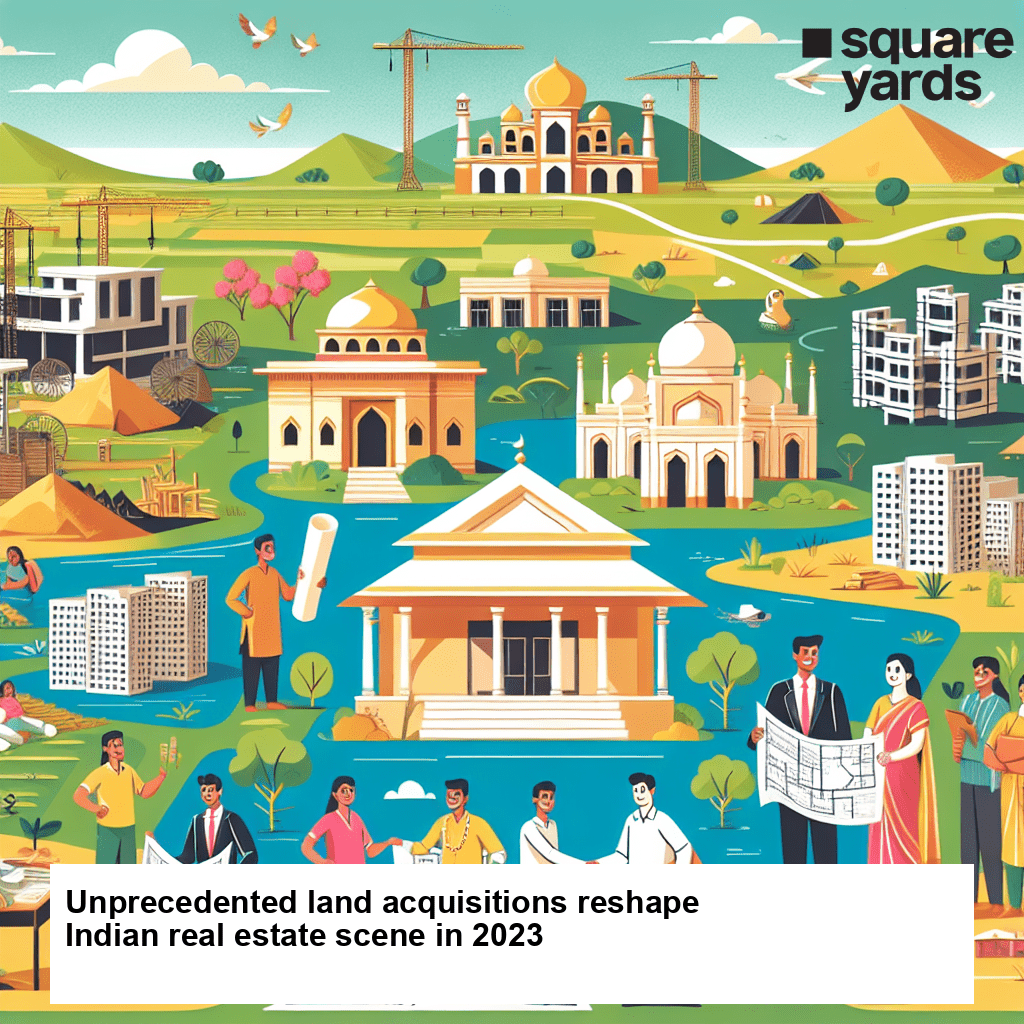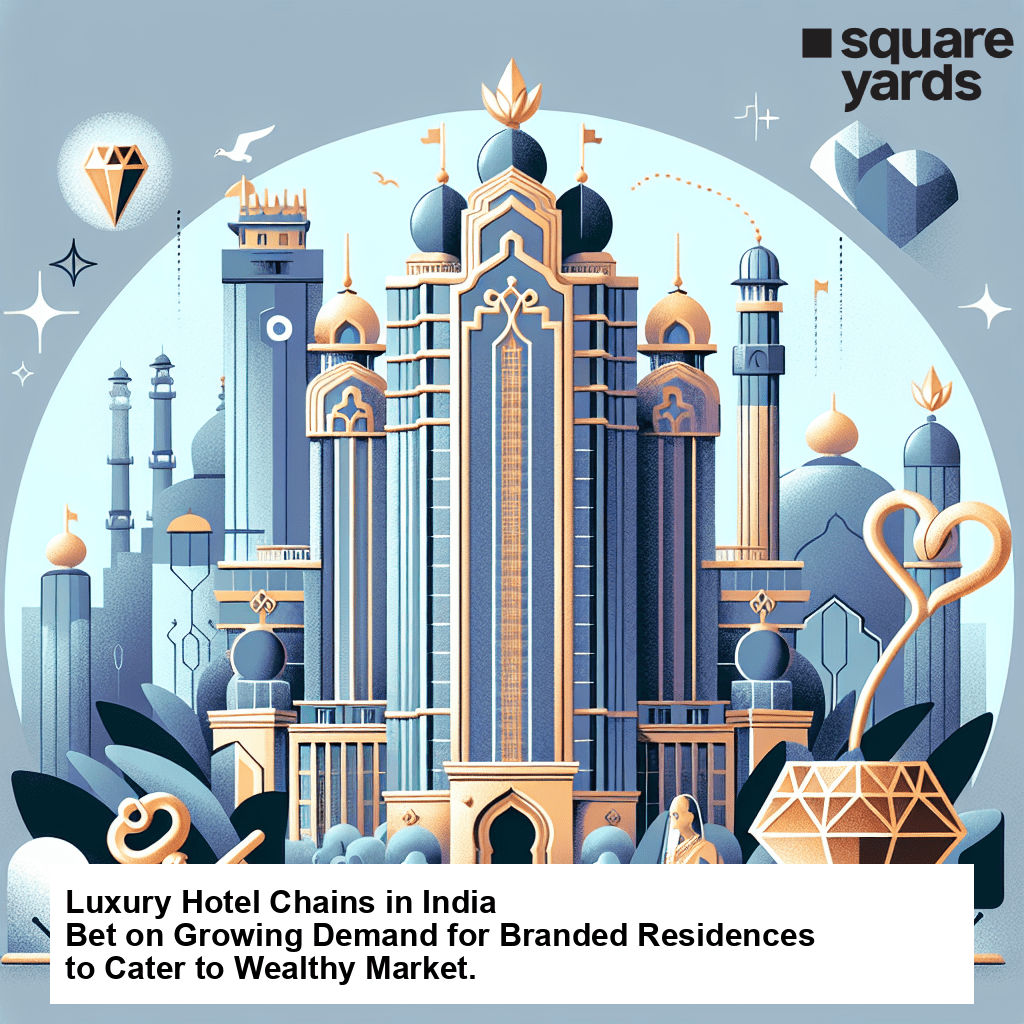Imbibing the “Flash and Fantaisie” that glistens through the celebrity bejewelled Cannes film festival, we prance in the French Riviera as we read through these lines. Amongst embracing many Museé d’Art that models on the streets of the Mediterranean coast of southeastern France, we have a not-so-basic underwater museum to appreciate here.
Is Écomusée Sous-Marin (A museum is born) marking the beginning of manoeuvering the ocean depths as public spaces? At least that’s what the artist Jason deCaires Taylor quotes in many of his interviews. The museum is submerged in the Mediterranean sea, almost like a collection of metaphorical Stonehenge that represents the portraits of local members of a community.
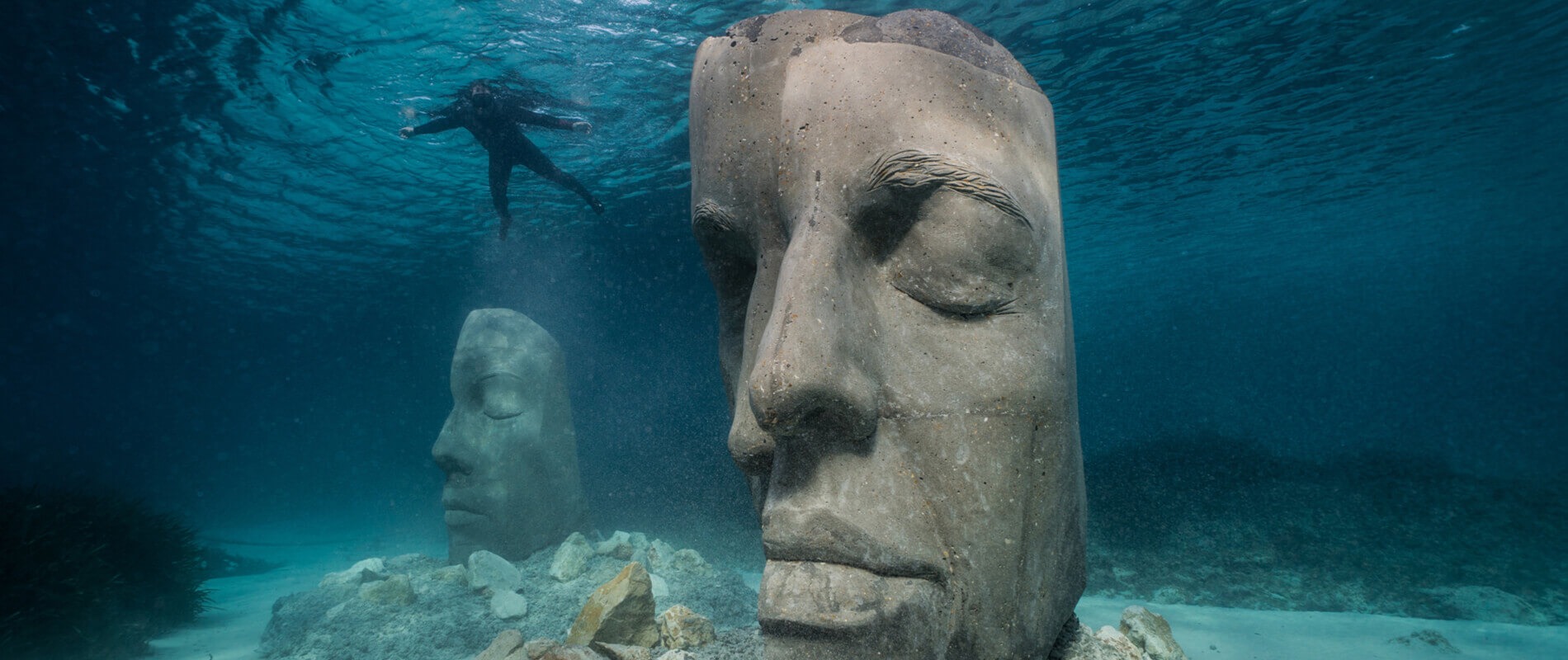
source – mybestplace.com
“I think many people have the misconception that the most beautiful and fragile part of our oceans is coral reefs, whereas some of the most spectacular and unique waterways we have are sometimes right on our step.”
Table of contents
The Purpose of Installing an Underwater Museum
The purpose of installing these sculptures is to remind us of the importance of oceans and marine life, preserving them to our best. While we fathom the deepest layers of the ocean, we can see habitats being decimated by humans.
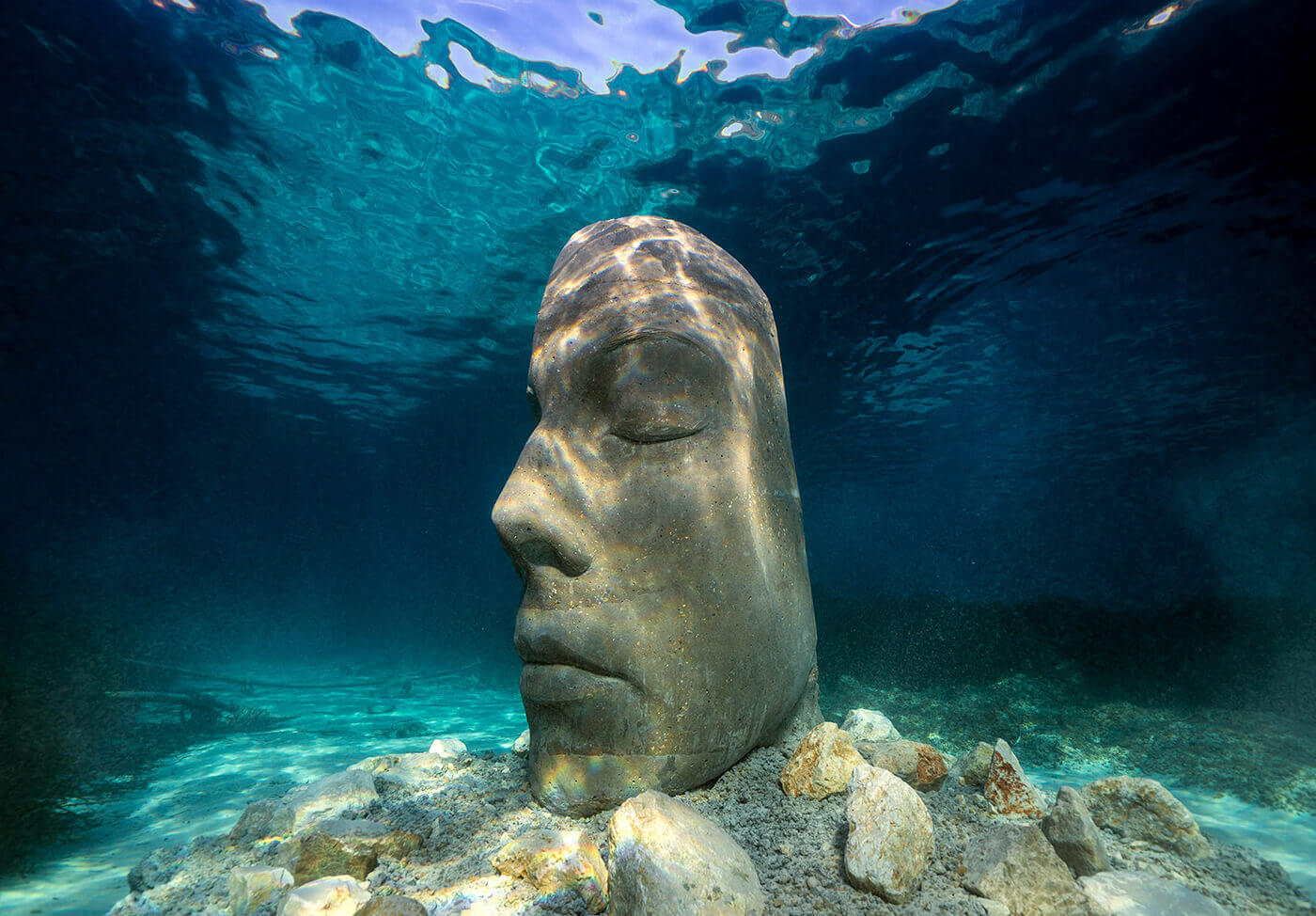
source – mybestplace.com
The goal here is that visitors will foster a sense of care for the ocean and better appreciate its value. Evolving the exhibition’s aesthetic, the architect looks forward to a sense of nurturing by making it a space accessible to the general public.
“If we lived next to a forest or nature reserve where the animals were extracted on an industrial scale and dumped unwanted waste, there would be a public outcry. This is happening every day in our surrounding waters, and it largely goes unnoticed.”
see also@ The Met Museum: A Hotpot of Gothic, Neoclassical and Medieval Architecture
The Concept
The artist treats the ocean bed as a gallery of art display, exhibiting his phenomenal work in sculptures. To this underwater museum, the creator anticipates a sunken botanical garden from his first artwork, “The Lost Correspondent”.
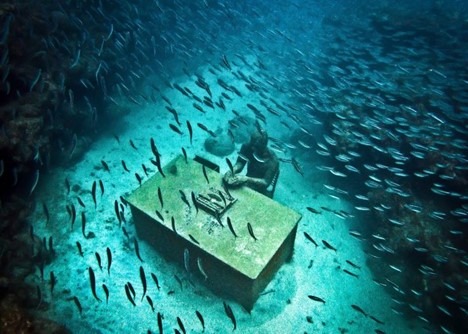
“The Lost Correspondent” – Source: Pinterest
Apart from safeguarding the ocean bed and marine life, the artist went ahead with the concept of using split masks as metaphors for the ocean. Representing the duality of the sea, the curvature of the sculpture wraps two sides of the world in a singular form. Where one side of the art piece embraces strength and infrangibility, the other side narrates fragility caused by humans. We usually witness the sprawling mask of the sea, exposed to manual degradation. The other tranquil side of the sea is unexplored, curling up in a balanced ecosystem, oh so surreal and majestic!
The question arises: Who are these people embodying the masks and playing the absolute exterior?
This keeps getting interesting as we dive into the concept behind these masks:
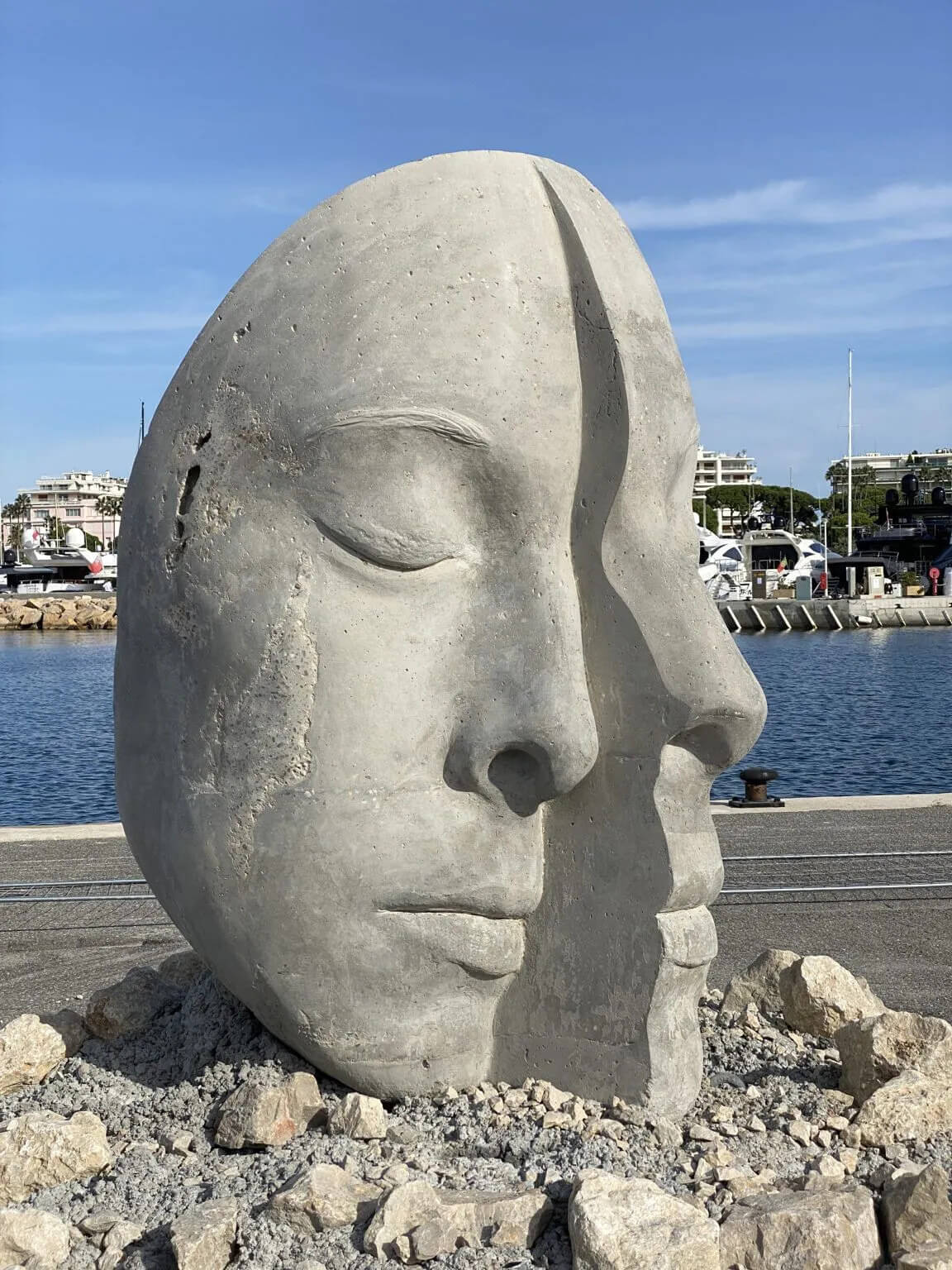
source – architectureplusdesign.in
These sculptures are an outline of the people from the local community and connect to Île Sainte-Marguerite’s history. The search for the faces began from a published ad in a local newspaper where he invited the residents to have their faces cast into art. Forty faces were finally cast and this number was narrowed down to six. These six casts were upscaled and installed as six-foot-tall sculptures.
So, these sculptures are people among the crowd. A fisherman, Maurice is eighty years old, an entrepreneur, a curator and a schoolchild. While designing these sculptures, the fisherman quoted his problem to the artist- of catching only 20% of the fish compared to the past. Taylor was observant of this domino effect, which led to him taking the initiative of preserving life under the unknown.
Although the primary objective of installing an underwater museum was to preserve marine life, the ocean was conditioned as the perfect exhibit space. The artist, “Jason deCaires Taylor,” quotes the sea as the most remarkable exhibition space that an artist could ever wish for. He appreciates the lighting effects that transcend the sculpture, changing by the hour and forming sciography of sorts. The explosions of the sand cover the sculptures in a mystical cloud of perennial quality for the visitors to witness the ethereal beauty.
“Nothing man-made matches the imagination of nature.” – Jason deCaires Taylor
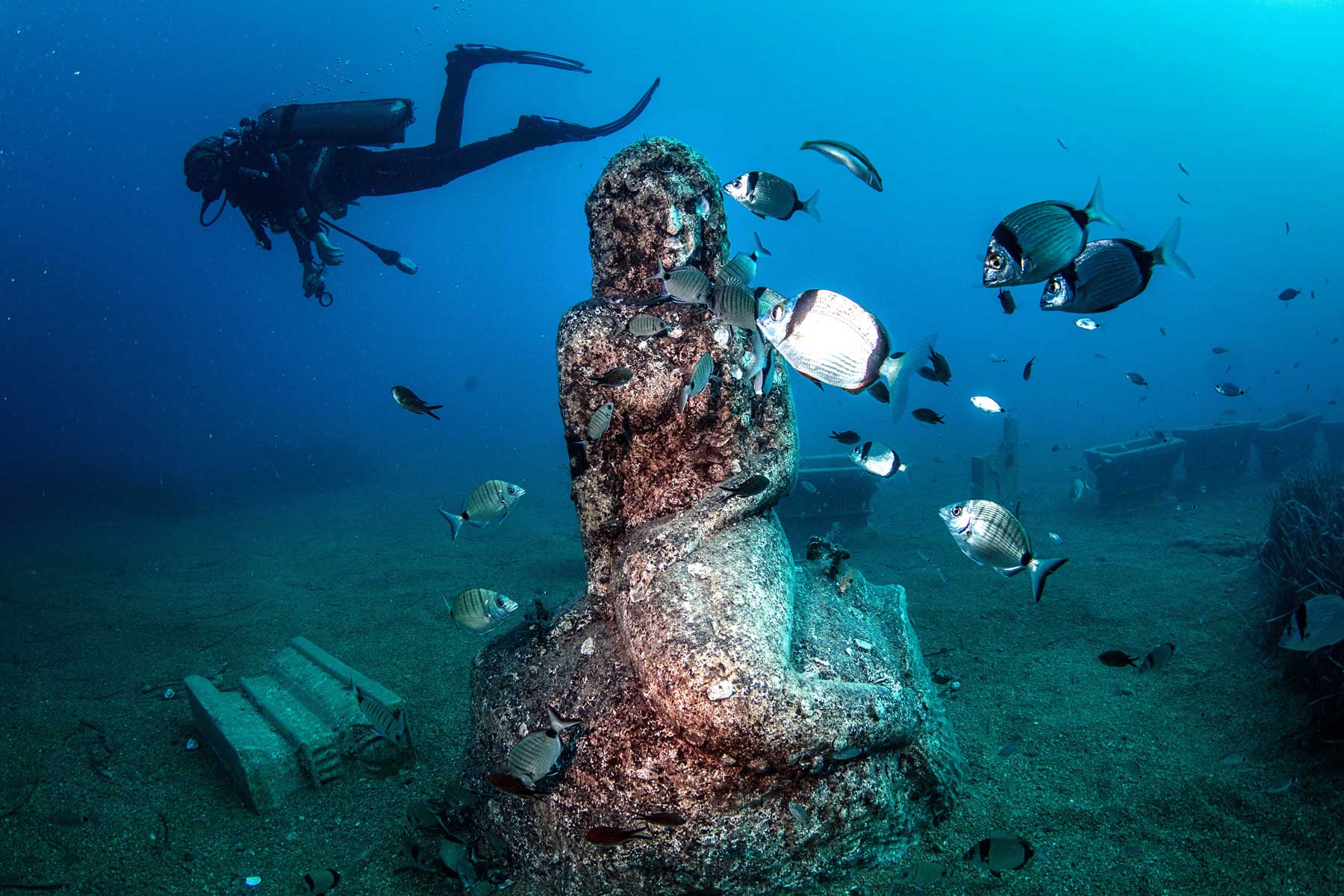
source – travelandleisure.com
Nature is the paramount artist in a widened perspective, and everything else is just a bestowed canvas. The water structures the art in a timeline, morphing it into a coral reef within the ocean. The sponges appear as veins across the face, and staghorn coral morphs the formation of the sculpture, fireworms create white lines as they feed, tunicates explode, sea urchins crawl across the bodies, coralline algae confers a deep purple shade. Fishes drift slightly overhead these sculptures, making them feel consolidated.
Did You Know?
The bed of the sea embraces the deepest red ever witnessed.
Installation and Construction
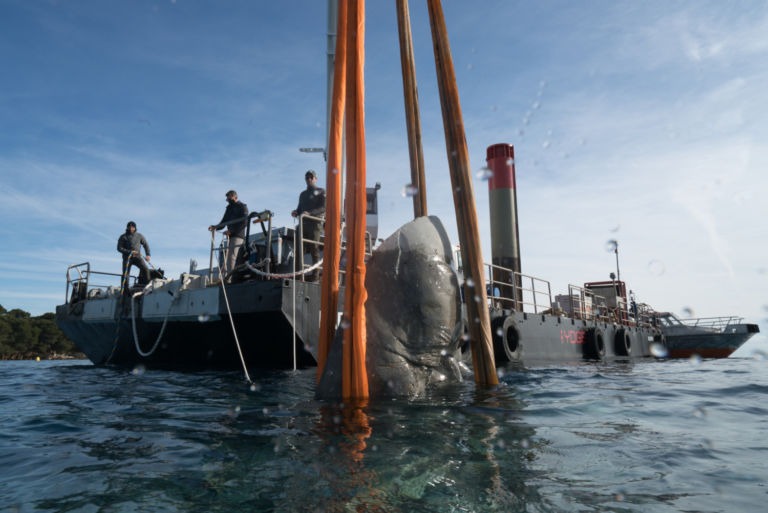
source – scubadiverlife.com
These sculptures are placed in the depths of the mediterranean sea, resting gracefully on the ocean’s bed. These sculptures are perceived as coral reefs, placed close to the white sand and the swaying Posidonia seagrass meadows. The sea’s profundity is shallow, and its easy vicinity to the shore makes the museum more accessible to the public. This water quality provides snorkelers or sea divers optimal conditions to experience this marvel.
All the sculpted faces are elaborated and cleaved into two parts, resembling the duality of metaphorical genres. The fragmentation of the faces sees each one divided into two different sized parts. The larger outer half is intended to represent a mask for its smaller counterpart.
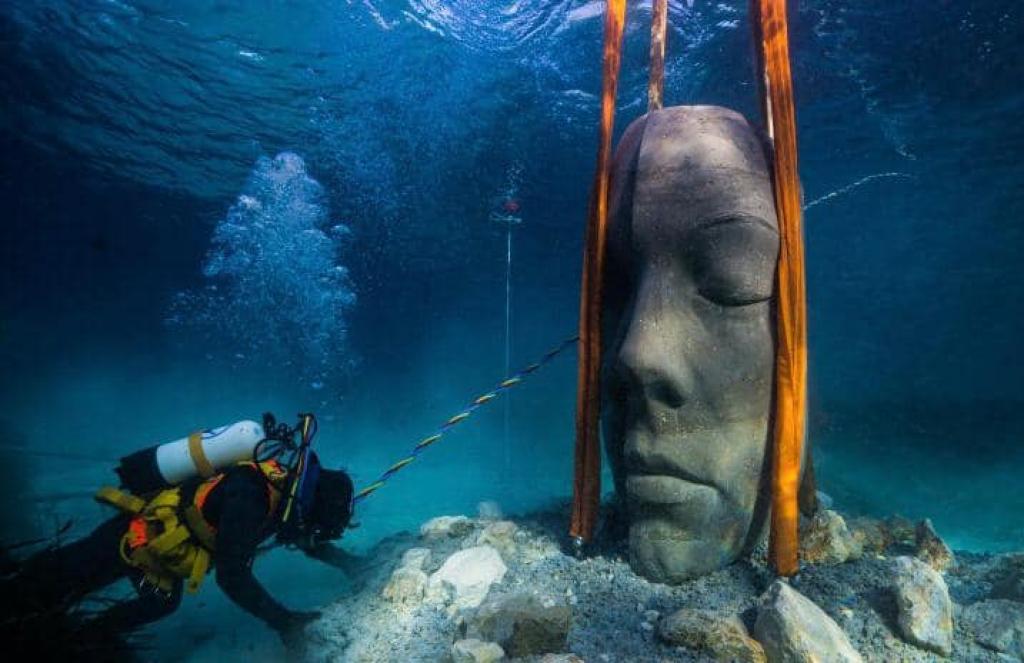
source – themayor.eu
The location also stands out because the underwater premise was previously regarded as welcoming marine infrastructure. A section of the project involved a prominent site cleanse where marine debris, including engines and pipelines, was drawn out to make space for artwork installation.
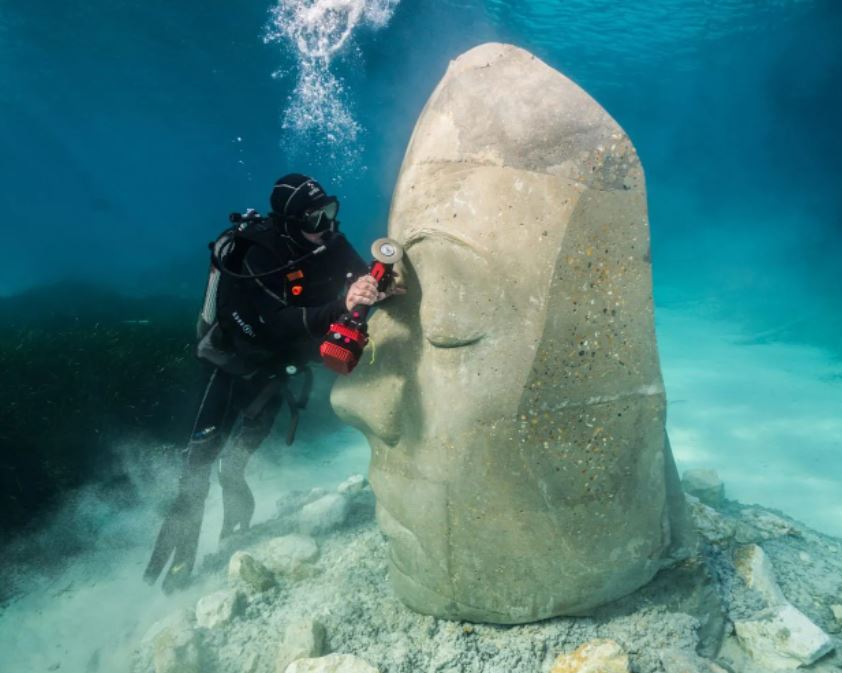
source – architectureplusdesign.in
“I think there’s a danger when we look at the ocean. It looks robust and powerful, untouchable,” says deCaires Taylor. “When what’s happening beneath the water is unprecedented, it’s extremely fragile.”
It is interesting to note that boats won’t be permitted to enter the premises to install the sculptures, and it would be a safe site for snorkelers. Anticipating optimism in the regrowth and replenishment of the Posidonia (the lungs of the world), these sculptures stand as metaphorical soldiers and caregivers.
What Lies Ahead?
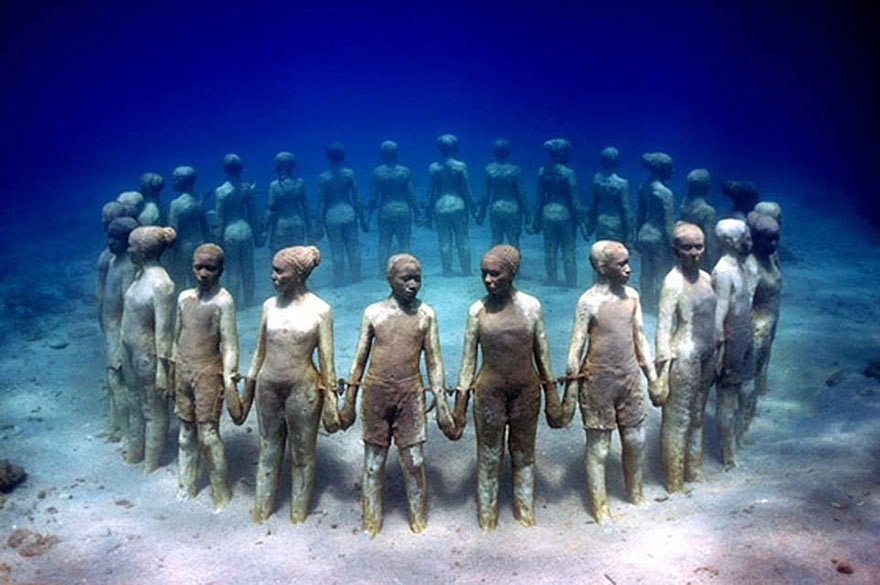
source – cordmagazine.com
The artist’s goal is to treat the ocean bed as a public space and create more opportunities apart from the terra firma. This would further induce a value of nurturing marine life in the ensuing era.
“Marine ecologies have been decimated by human activity in the Mediterranean over the past few decades. It is not obvious what is happening when observing the sea from afar,” says Jason deCaires Taylor.
see also@ Green Sheen: The Beauty of Sustainable Architecture
Conclusion: From Underwater to the Shore
Needless to say, the underwater museum of Cannes intrigues us, but what’s more interesting is what goes behind the construction of these sculptures. Made with PH balanced cement, these sculptures become the man-installed “coral reef” inside the sea. However, the energy emission, process of erosion and its impact on the timeless ocean bed is something that must be justified. This museum and how the sea paints every sculpture in the tint it’s supposed to exist in is almost unthinkable.
In one of his interviews, Taylor mentions how he wishes to use the ocean bed as a public space and such that the concept of underwater recreations reverses its methodologies. We all have seen those aquatic dining spaces or museums (on the internet) built in a tunnel-like structure. Now imagine witnessing everything on land while you are snorkelling amidst the sea. Yes! Interesting right? Or is it? Where does this bring us? Is this what we are looking forward to? Are we done exhausting the land we walk on? And are we now taking steps towards water bodies? That’s something to ponder over. One cannot deny that a revolution in the world of art and conservation has taken place due to the efforts of one man.














